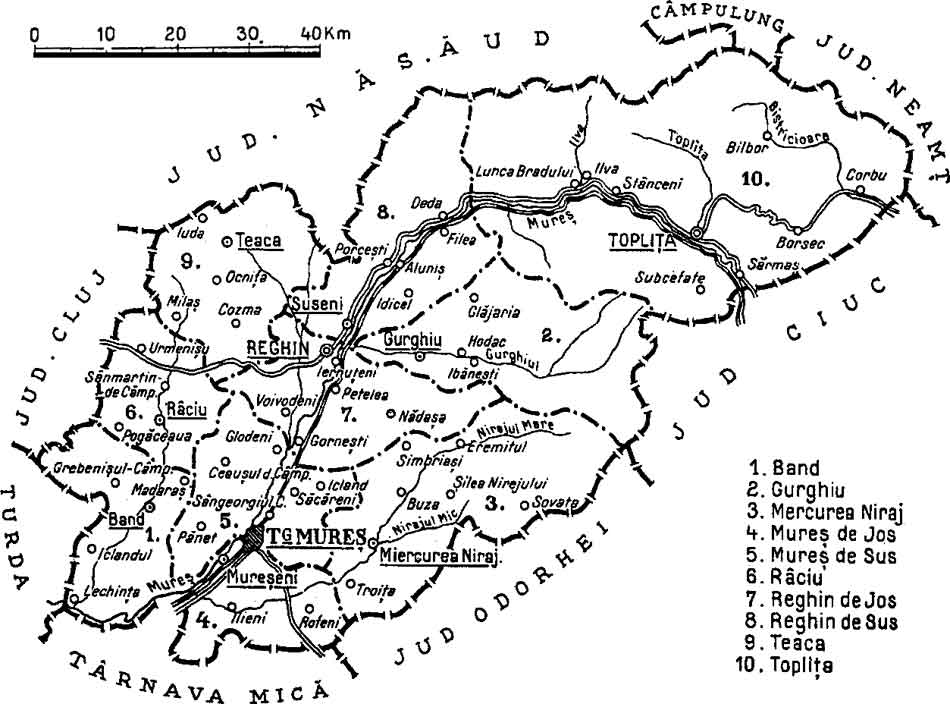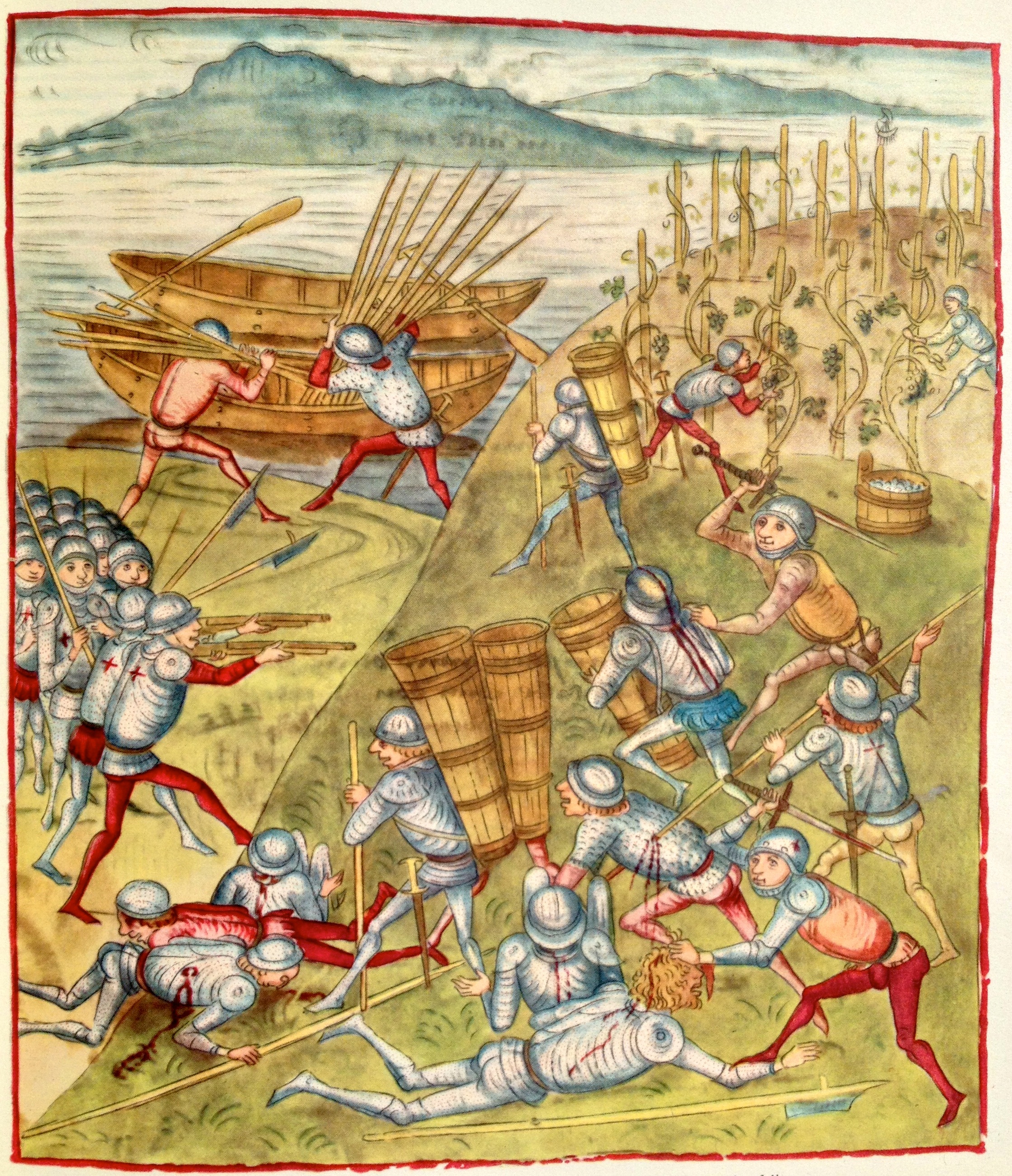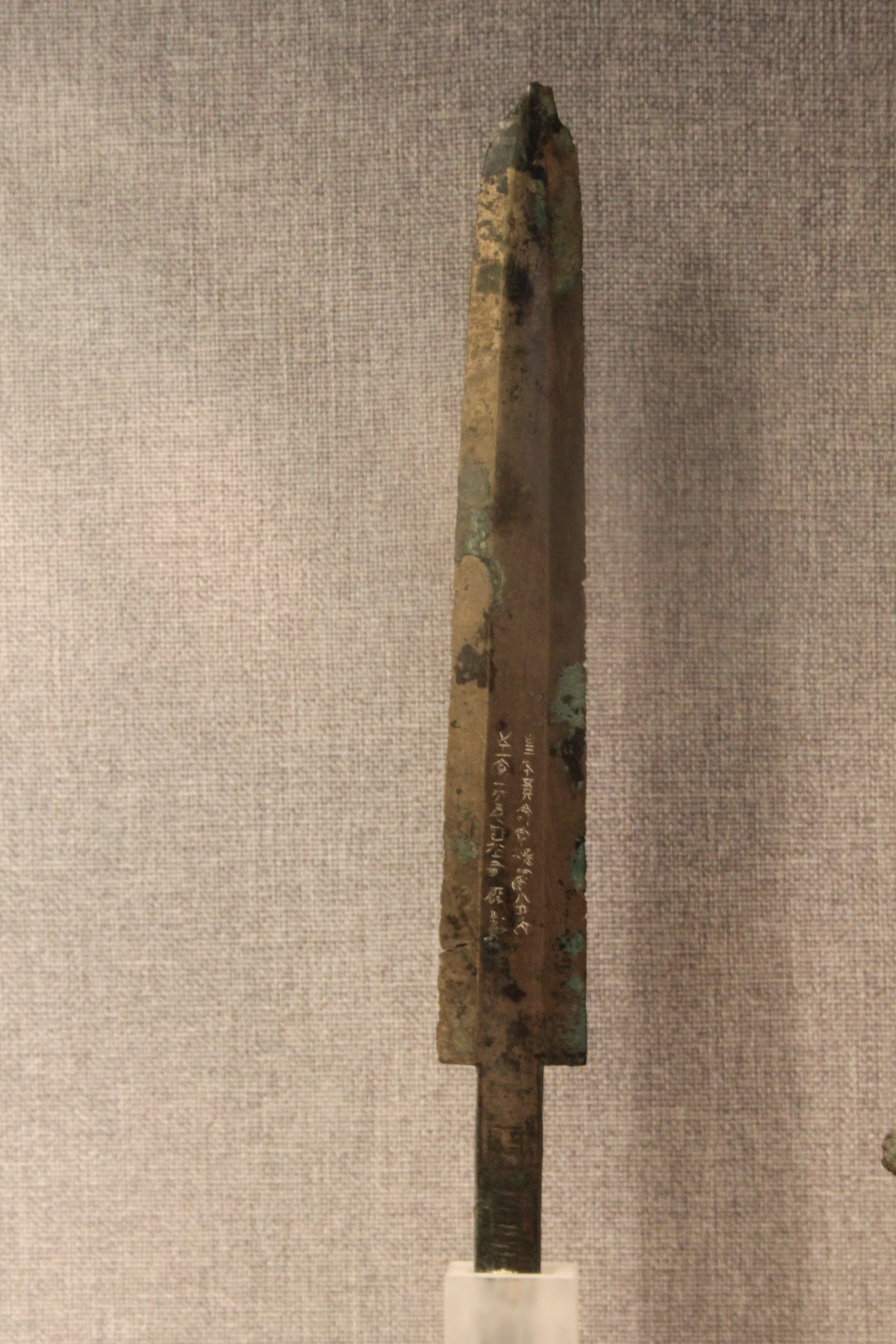|
Ironsmiths' Tower
The Ironsmiths' Tower (, ) is located behind the Monastery Church, Sighișoara, Monastery Church of Sighișoara, Sighişoara, in Mureș County, Romania. Its main role was to protect the church in case of a siege. It was built in 1631 on the foundations of the old Barber's Tower. From inside the citadel it appears relatively small, but is impressive when viewed from the exterior of the wall. The tower has a trapezoidal ground plan and dominates with its bulk the entire North-east side of the citadel fortification. It is a flanking tower stuck to the wall of the fortress. At the top there are two defence floors provided with arrow slits. As it has remarkably strong roof framework, it is supposed that it was also used for the storage of weaponry. At the time of construction there was apparently also an artillery bulwark connecting the Ironsmiths' Tower to the Barrelmakers' Tower, but this was pulled down later. In 1680 General Registry stated that in the tower were found six arquebu ... [...More Info...] [...Related Items...] OR: [Wikipedia] [Google] [Baidu] |
Monastery Church, Sighișoara
The Monastery Church, also known as the Church of the Dominican Monastery (, ), is a Gothic church formerly part of a medieval Dominican monastery in Sighișoara, Romania. The monastery was erected in 1289, and demolished in 1888. The monastery was one of a network planned by Paulus Hungarus (Paul the Hungarian) throughout the Kingdom of Hungary to act as a bulwark against heresy. Hungarian nobleman Leonard Barlabássy Leonard Barlabássy de Héderfája (; 1455 – May/September 1525) was a Hungarian nobleman at the turn of the 15th and 16th centuries, who served as Vice-voivode of Transylvania from 1501 to 1525. Family and early life Leonard Barlabássy (also ... gave the church an endowment. File:Sighisoara Biserica Manastirii.JPG File:Sighisoara Biserica Manastirii (2).JPG File:Sighisoara Biserica Manastirii (3).jpg References Bibliography * * * Sighișoara Sighisoara Monastery Sighisoara Monastery Sighisoara Monastery Sighisoara Monastery Sighisoara ... [...More Info...] [...Related Items...] OR: [Wikipedia] [Google] [Baidu] |
Sighișoara
Sighișoara (; ; ; Transylvanian Saxon dialect, Transylvanian Saxon: ''Schäsbrich'', ''Šesburχ'', or ''Scheeßprich''; ; or ) is a Municipiu, city on the Târnava Mare, Târnava Mare River in Mureș County, central Romania. Located in the historic region of Transylvania, Sighișoara had a population of 23,927 according to the 2021 Romanian census, 2021 census. It is a popular tourist destination for its well-preserved Historic Centre of Sighișoara, old town, which is listed by UNESCO as a World Heritage Site since 1999. The town administers seven villages: Angofa, Aurel Vlaicu, Hetiur, Rora, Șoromiclea, Venchi, and Viilor. History Starting with the mid 12th century, Germans, German Artisan, craftsmen and merchants known as the Transylvanian Saxons () were invited to Transylvania by the then Kingdom of Hungary, King of Hungary, Géza II of Hungary, Géza II, to settle and defend the frontier of his realm and improve the region's economy. The chronicler Krauss li ... [...More Info...] [...Related Items...] OR: [Wikipedia] [Google] [Baidu] |
Mureș County
Mureș County (, , ) is a county (''județ'') of Romania, in the Historical regions of Romania, historical region of Transylvania, with the administrative centre in Târgu Mureș. The county was established in 1968, after the administrative reorganization that re-introduced the historical ''județ'' (Counties of Romania, county) system, still used today. This reform eliminated the previous Magyar Autonomous Region, Mureș-Magyar Autonomous Region, which had been created in 1952 within the People's Republic of Romania. Mureș County has a vibrant multicultural fabric that includes Székely Land, Hungarian-speaking Székelys and Transylvanian Saxons, with a rich heritage of Villages with fortified churches in Transylvania, fortified churches and towns. Name In Hungarian language, Hungarian, it is known as ''Maros megye'' (), and in German language, German as ''Kreis Mieresch''. Under Kingdom of Hungary, a county with a similar name (Maros-Torda County, ) was created in 1876. There ... [...More Info...] [...Related Items...] OR: [Wikipedia] [Google] [Baidu] |
Romania
Romania is a country located at the crossroads of Central Europe, Central, Eastern Europe, Eastern and Southeast Europe. It borders Ukraine to the north and east, Hungary to the west, Serbia to the southwest, Bulgaria to the south, Moldova to the east, and the Black Sea to the southeast. It has a mainly continental climate, and an area of with a population of 19 million people. Romania is the List of European countries by area, twelfth-largest country in Europe and the List of European Union member states by population, sixth-most populous member state of the European Union. Europe's second-longest river, the Danube, empties into the Danube Delta in the southeast of the country. The Carpathian Mountains cross Romania from the north to the southwest and include Moldoveanu Peak, at an altitude of . Bucharest is the country's Bucharest metropolitan area, largest urban area and Economy of Romania, financial centre. Other major urban centers, urban areas include Cluj-Napoca, Timiș ... [...More Info...] [...Related Items...] OR: [Wikipedia] [Google] [Baidu] |
Arquebus
An arquebus ( ) is a form of long gun that appeared in Europe and the Ottoman Empire during the 15th century. An infantryman armed with an arquebus is called an arquebusier. The term ''arquebus'' was applied to many different forms of firearms from the 15th to 17th centuries, but it originally referred to "a hand cannon, hand-gun with a hook-like projection or lug on its under surface, useful for steadying it against battlements or other objects when firing". These "hook guns" were in their earliest forms defensive weapons mounted on German city walls in the early 15th century. The addition of a shoulder stock, priming pan, and matchlock mechanism in the late 15th century turned the arquebus into a handheld firearm and also the first firearm equipped with a trigger. The exact dating of the matchlock's appearance is disputed. It could have appeared in the Ottoman Empire as early as 1465 and in Europe a little before 1475. The heavy arquebus, which was then called a musket, was d ... [...More Info...] [...Related Items...] OR: [Wikipedia] [Google] [Baidu] |
Handgun
A handgun is a firearm designed to be usable with only one hand. It is distinguished from a long gun, long barreled gun (i.e., carbine, rifle, shotgun, submachine gun, or machine gun) which typically is intended to be held by both hands and braced against the shoulder. Handguns have shorter effective ranges compared to long guns, and are much harder to shoot accurately. While most early handguns are single-shot pistols, the two most common types of handguns used in modern times are revolvers and semi-automatic pistols. Before commercial mass production, handguns were often considered a badge of office — comparable to a ceremonial weapon, ceremonial sword – as they had limited utility and were more expensive than the long barreled guns of the era. In 1836, Samuel Colt patented the Colt Paterson, the first practical mass-produced revolver, which was capable of firing five shots repeating firearm, in rapid succession and quickly became a popular personal weapon, giving rise to ... [...More Info...] [...Related Items...] OR: [Wikipedia] [Google] [Baidu] |
Musket
A musket is a muzzle-loaded long gun that appeared as a smoothbore weapon in the early 16th century, at first as a heavier variant of the arquebus, capable of penetrating plate armour. By the mid-16th century, this type of musket gradually disappeared as the use of heavy armour declined, but ''musket'' continued as the generic term for smoothbore long guns until the mid-19th century. In turn, this style of musket was retired in the 19th century when rifled muskets (simply called rifles in modern terminology) using the Minié ball (invented by Claude-Étienne Minié in 1849) became common. The development of breech-loading firearms using self-contained Cartridge (firearms), cartridges, introduced by Casimir Lefaucheux in 1835, began to make muskets obsolete. The first reliable repeating rifles, the 1860 Henry rifle and its 1866 descendent the Winchester rifle, superseded muskets entirely. Repeating rifles quickly established themselves as the standard for rifle design, ending the ... [...More Info...] [...Related Items...] OR: [Wikipedia] [Google] [Baidu] |
Lance
The English term lance is derived, via Middle English '' launce'' and Old French '' lance'', from the Latin '' lancea'', a generic term meaning a wikt:lancea#Noun">lancea'', a generic term meaning a spear">wikt:lancea#Noun">lancea'', a generic term meaning a spear or javelin employed by both infantry">spear or javelin">spear">wikt:lancea#Noun">lancea'', a generic term meaning a spear or javelin employed by both infantry and cavalry, with English initially keeping these generic meanings. It developed later into a term for spear-like weapons specially designed and modified to be part of a "weapon system" for use couched under the arm during a charge, being equipped with special features such as grappers to engage with lance rests attached to breastplates, and vamplates, small circular plates designed to prevent the hand sliding up the shaft upon impact. These specific features were in use by the beginning of the late 14th century. Though best known as a military and sporting ... [...More Info...] [...Related Items...] OR: [Wikipedia] [Google] [Baidu] |
Lead
Lead () is a chemical element; it has Chemical symbol, symbol Pb (from Latin ) and atomic number 82. It is a Heavy metal (elements), heavy metal that is density, denser than most common materials. Lead is Mohs scale, soft and Ductility, malleable, and also has a relatively low melting point. When freshly cut, lead is a shiny gray with a hint of blue. It tarnishes to a dull gray color when exposed to air. Lead has the highest atomic number of any stable nuclide, stable element and three of its isotopes are endpoints of major nuclear decay chains of heavier elements. Lead is a relatively unreactive post-transition metal. Its weak metallic character is illustrated by its Amphoterism, amphoteric nature; lead and lead oxides react with acids and base (chemistry), bases, and it tends to form covalent bonds. Lead compounds, Compounds of lead are usually found in the +2 oxidation state rather than the +4 state common with lighter members of the carbon group. Exceptions are mostly limited ... [...More Info...] [...Related Items...] OR: [Wikipedia] [Google] [Baidu] |
Gunpowder
Gunpowder, also commonly known as black powder to distinguish it from modern smokeless powder, is the earliest known chemical explosive. It consists of a mixture of sulfur, charcoal (which is mostly carbon), and potassium nitrate, potassium nitrate (saltpeter). The sulfur and charcoal act as fuels while the saltpeter is an oxidizer. Gunpowder has been widely used as a propellant in firearms, artillery, rocketry, and pyrotechnics, including use as a blasting agent for explosives in quarrying, mining, building Pipeline transport, pipelines, tunnels, and road#Construction, roads. Gunpowder is classified as a Explosive#Low, low explosive because of its relatively slow decomposition rate, low ignition temperature and consequently low brisance, brisance (breaking/shattering). Low explosives deflagration, deflagrate (i.e., burn at subsonic speeds), whereas high explosives detonation, detonate, producing a supersonic shockwave. Ignition of gunpowder packed behind a projectile generates ... [...More Info...] [...Related Items...] OR: [Wikipedia] [Google] [Baidu] |




